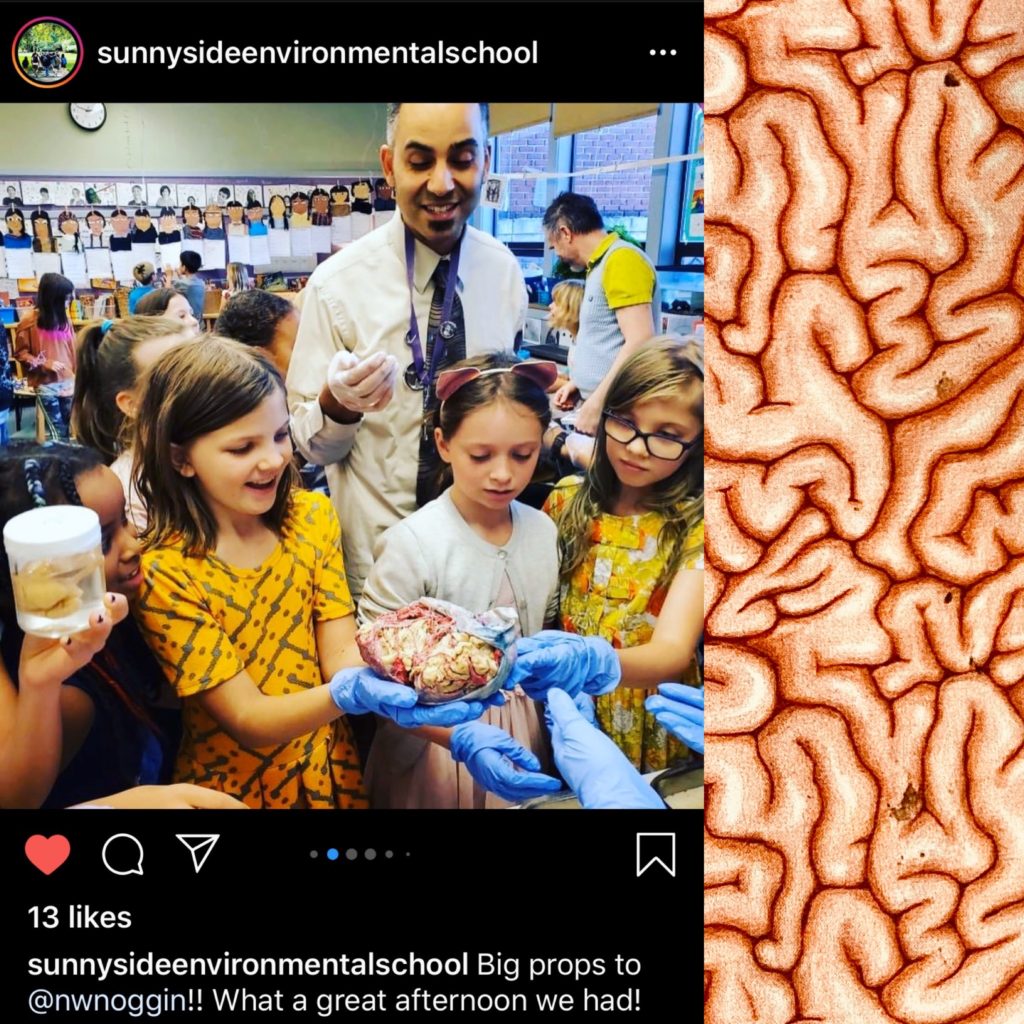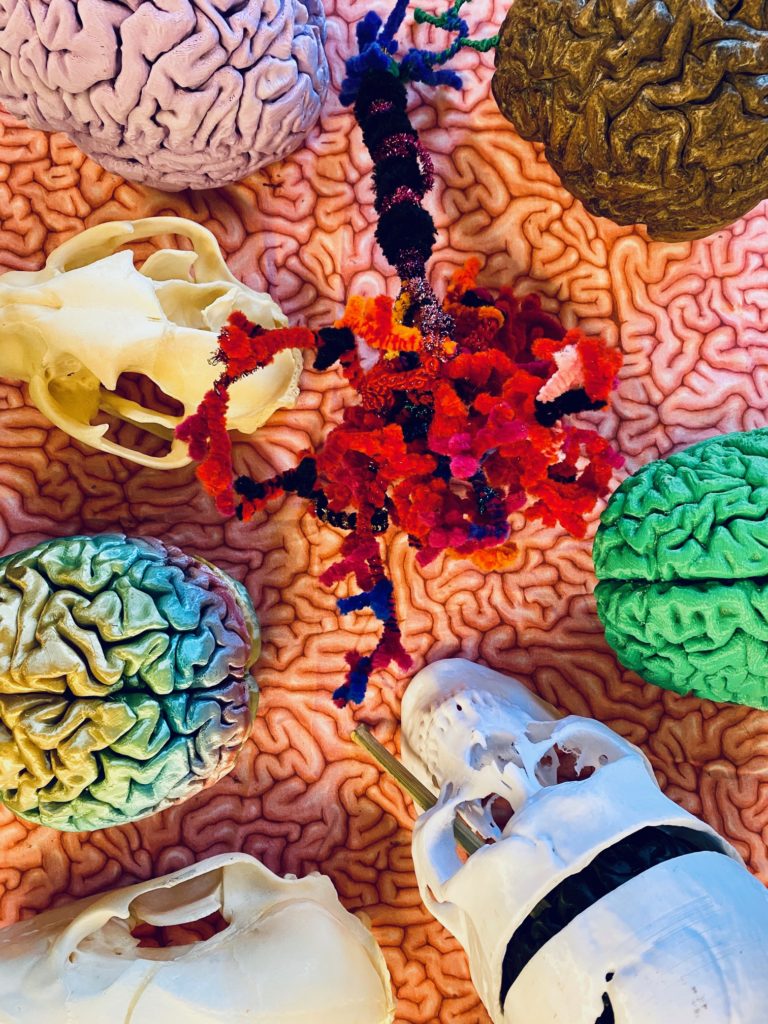
“Look for the helpers.”
–Fred Rogers
Neurons get the limelight, typically, in college textbooks, courses and even quite often in pipe cleaner form – but there are billions of non-neural cells that contribute to our brain’s cellular community – the glia!
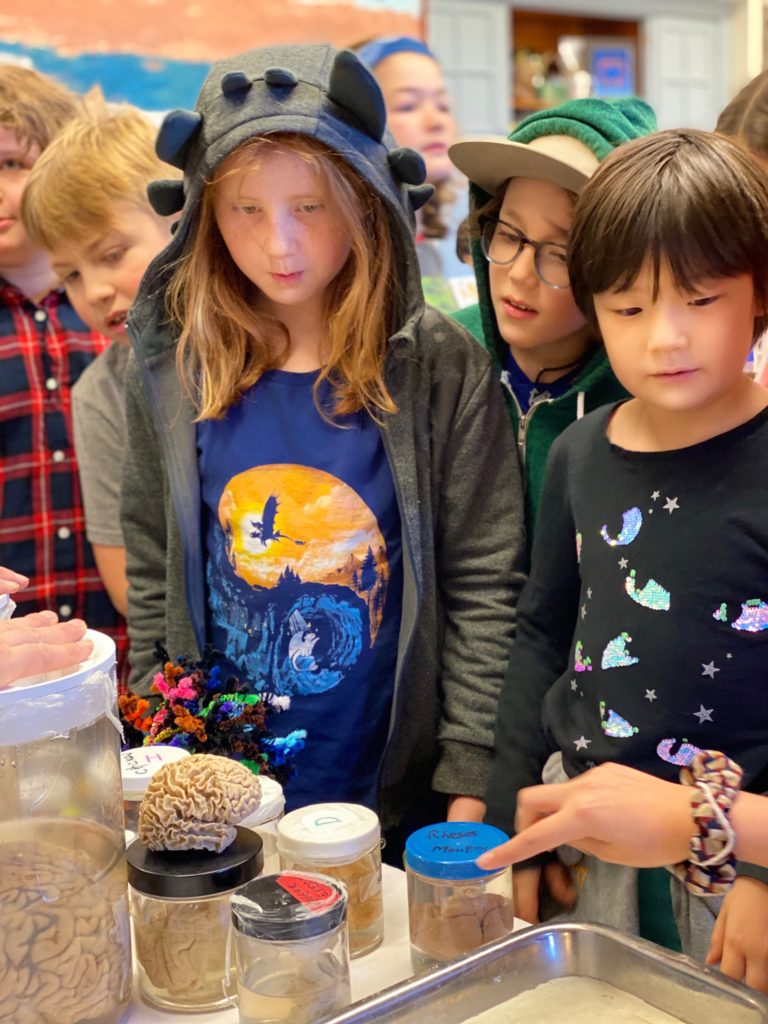
LEARN MORE: Glia as architects of central nervous system formation and function
We were thrilled to talk glia and other brainy topics this month with curious 4th graders in Portland Public Schools!
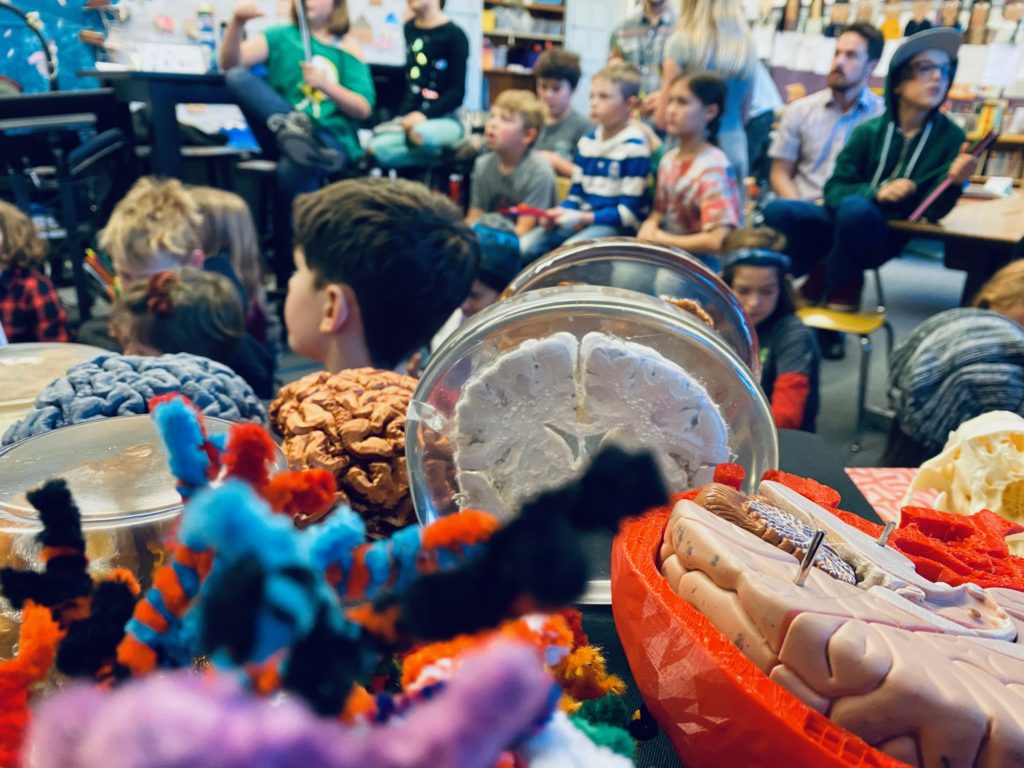
We joined teachers Asa Gervich and Jeremy Thomas in their vibrant classrooms at Sunnyside Environmental School with more of our welcome outreach volunteers, including Jacob Schoen from OHSU and the National University of Naturopathic Medicine (NUNM), Angela Hendrix from NW Noggin, Aaron Eisen from NUNM, and both Michael Deveney and Paul Delahanty from Portland State University!
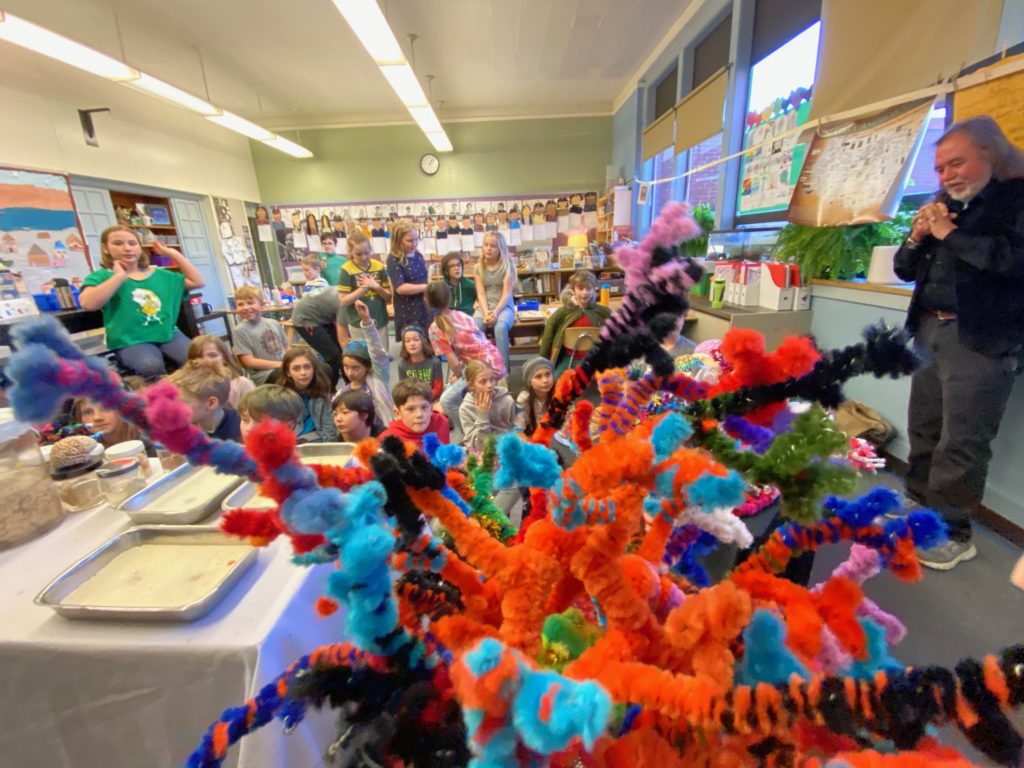
Sunnyside is a natural fit for Noggin, with its focus on community engagement and sense of place. Students don’t just stay in the classroom, but like our own volunteers they go out to meet people where they are, and listen, share and learn.
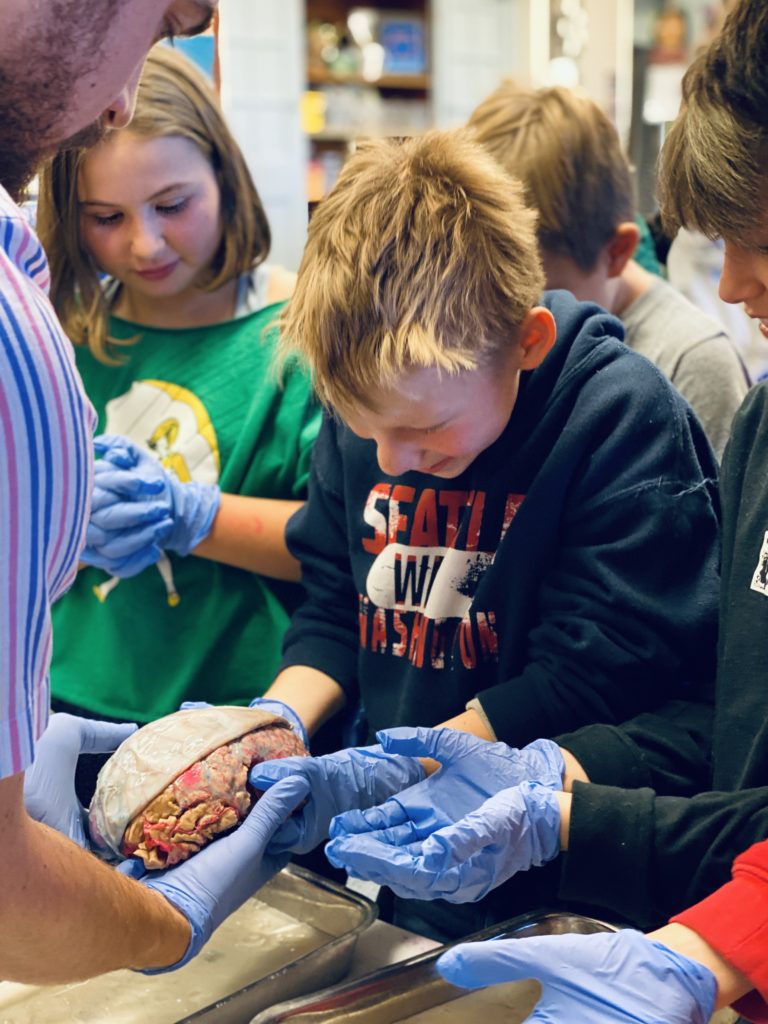
From their website: “Place-based education…is founded on the belief that students’ local community is one of the most important resources for learning… (P)art of the student learning experience is spent beyond the walls of the actual school building. Natural spaces, local neighborhoods, museums, our own school yard and university campuses are just a few places where our students learn in place.”
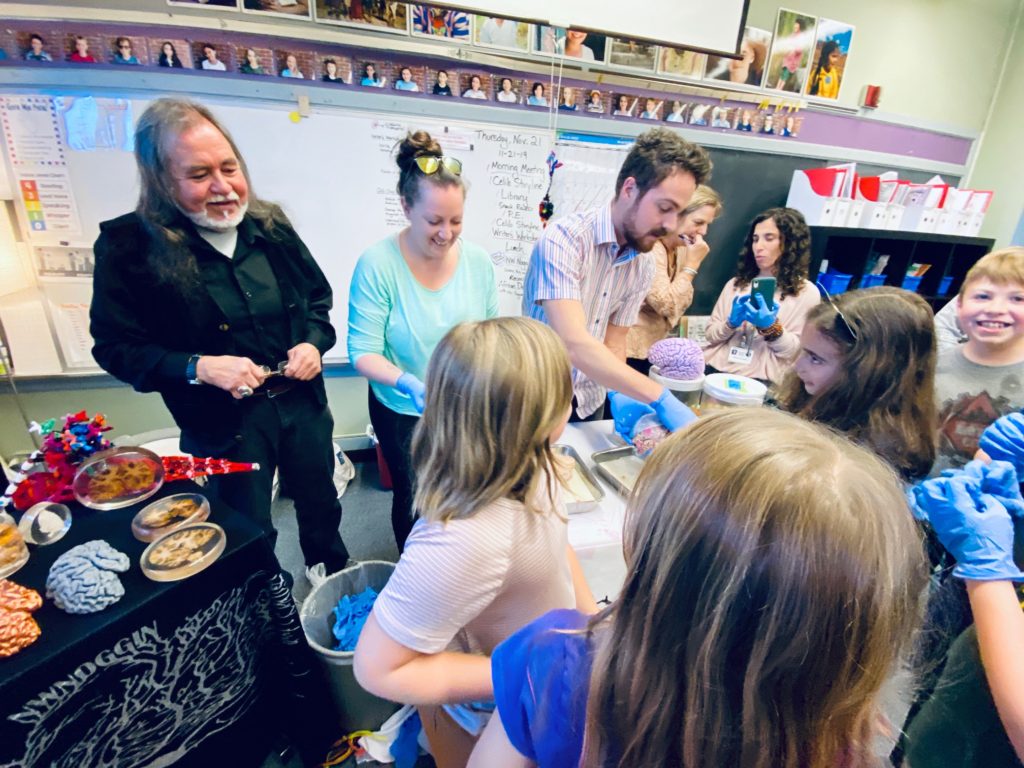
One of our accomplished Noggin volunteers is Paul Delahanty, an undergraduate in Psychology at Portland State. Paul has advocated on behalf of glial cells for years in the classroom, and on the road, noting that glia make up more than half of our brains. Glia is Greek for “glue,” as these cells were initially considered support cells which helped to hold the more critical neurons in place.
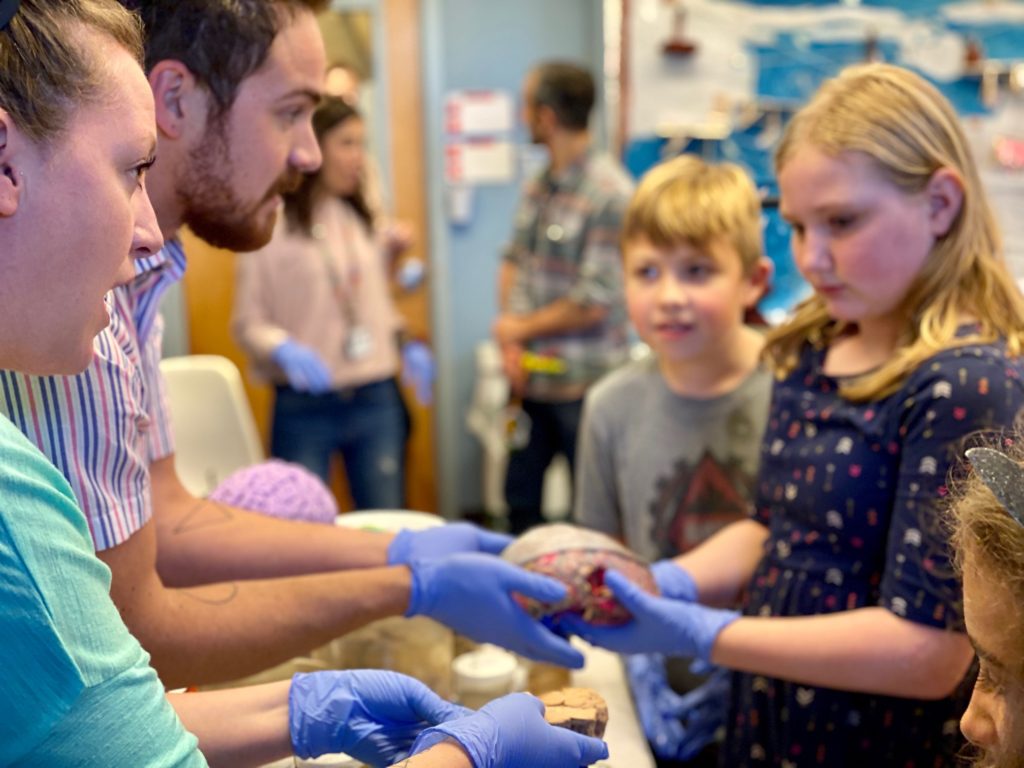
Yet publicly funded research is uncovering a wealth of significant glial contributions to both healthy and diseased brains, including some aspects of information processing. Glia are much more than glue – they are essential members of our nervous system’s cellular community, and neuroscientists should certainly go there and investigate further.
LEARN MORE: Glial Biology in Learning and Cognition
LEARN MORE: Glial cells in neuronal network function
LEARN MORE: Glial Cell: A Potential Target for Cellular and Drug Based Therapy in Various CNS Diseases
“Most of our brain cells are glial cells, once thought to be mere support cells, but now understood as having a critical role in brain function.”
– Thomas R. Insel
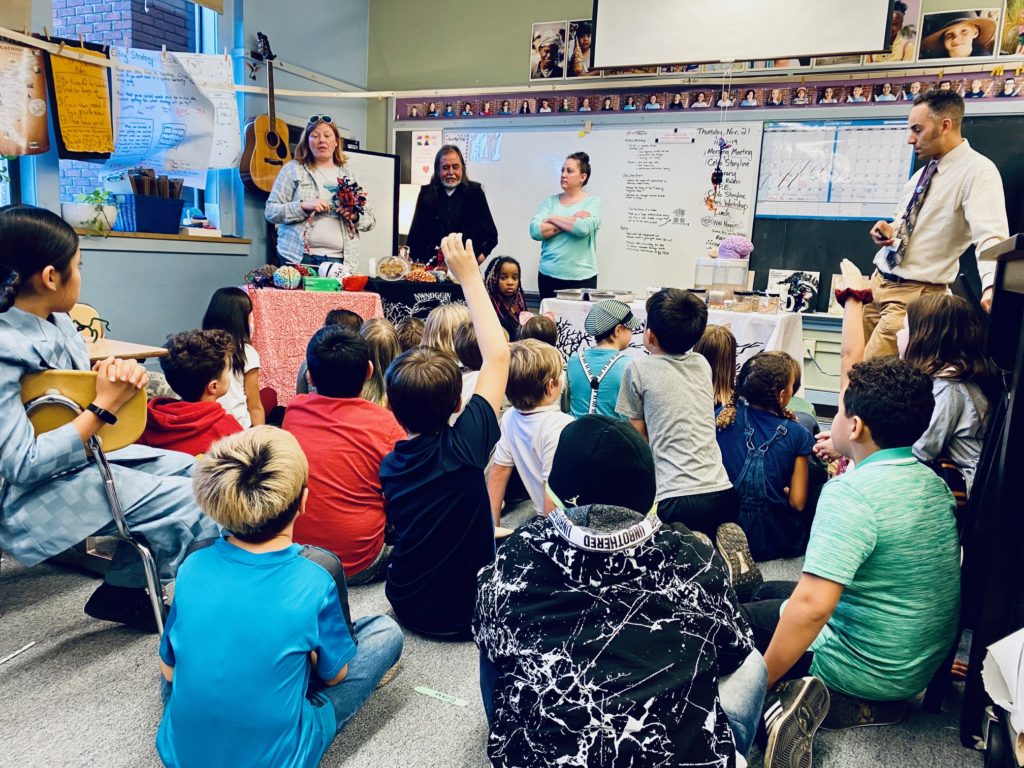
Two extraordinary scientists who’ve expanded our understanding of the critical role of glia are the late Ben Barres of Stanford University, and R. Douglas Fields, Chief of the Nervous System Development and Plasticity Section at the National Institutes of Health.
LEARN MORE: The Mystery and Magic of Glia: A Perspective on Their Roles in Health and Disease (Ben Barres)
LEARN MORE: Ben Barres: neuroscience pioneer, gender champion
LEARN MORE: The Transgender Scientist Who Changed How We See the Brain
LEARN MORE: Map the other brain (R. Douglas Fields)
LEARN MORE: Neuroscience: Map the other brain (R. Douglas Fields)
From Paul, our glial evangelist: ” As always thank you for inviting me to be part of Noggin’s outreach at Sunnyside. Again, I am astounded at the reaction to viewing the human brain, along with the brains of beautiful creatures other than us. The amazement of children seeing the brain outside the skull for the first time is priceless. In fact, everyone who is presented with this power plant that allows us to function views the brain with wonderment, as I do myself.”
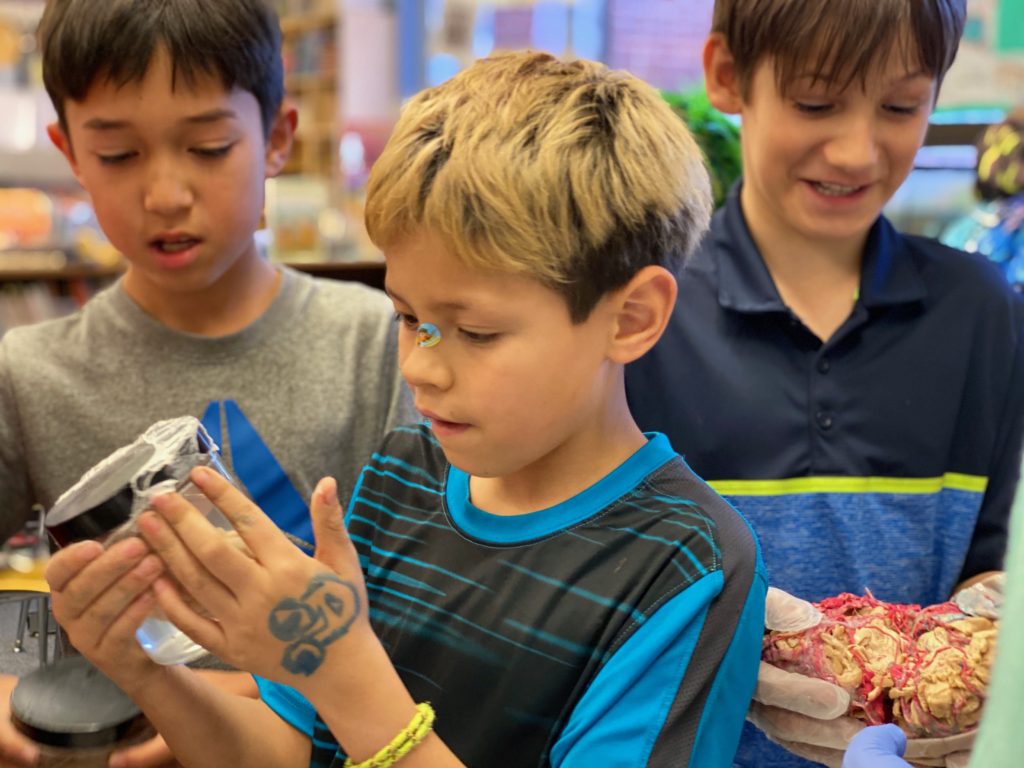
“What I try to convey to our audience is how there are many vital players and aspects of the nervous system that control our well being and behavior. I like to speak specifically about the various types of glial cells, because they make it possible for our neurons – and our brains – to function properly.”
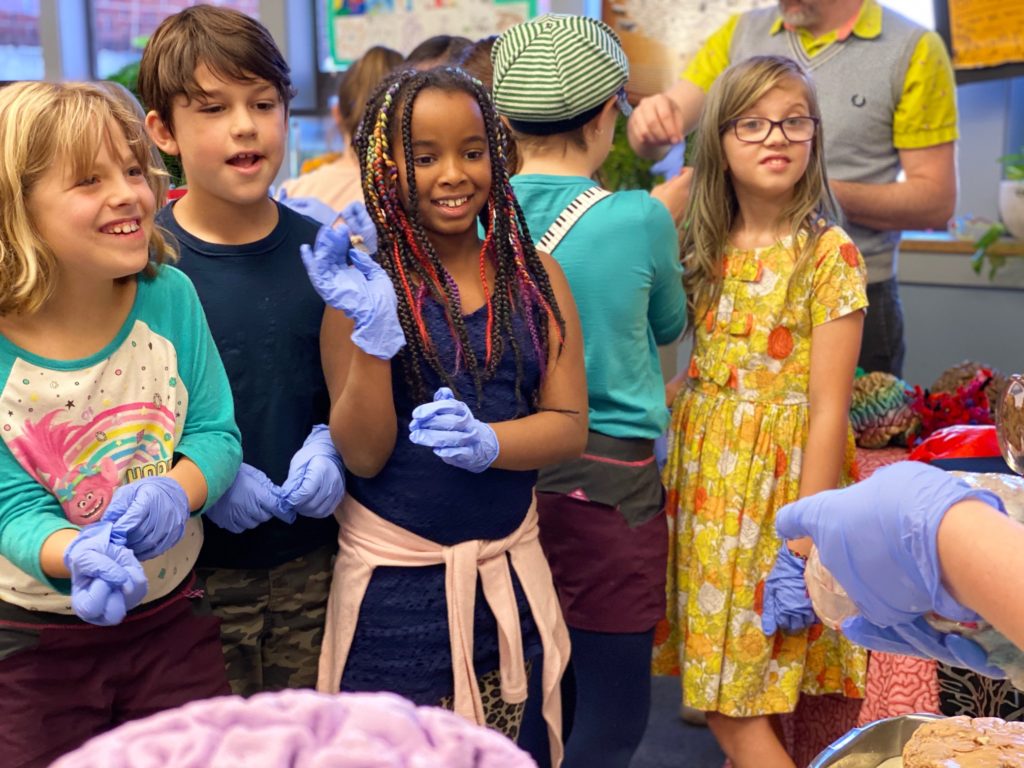
MICRO(GLIA)!
“The microglia (Micro!), for example, are the nurses, doctors, janitors and morticians of the glial family, constantly crawling throughout the brain looking for injury and insult. Micro is remarkably spider-like and mobile, and always touching and checking our synaptic connections. Should Micro find something it doesn’t like, it will transform to the Hulk, Batman, Supergirl, and Wonder Woman, and will attack, kill and clean up the cellular debris.”
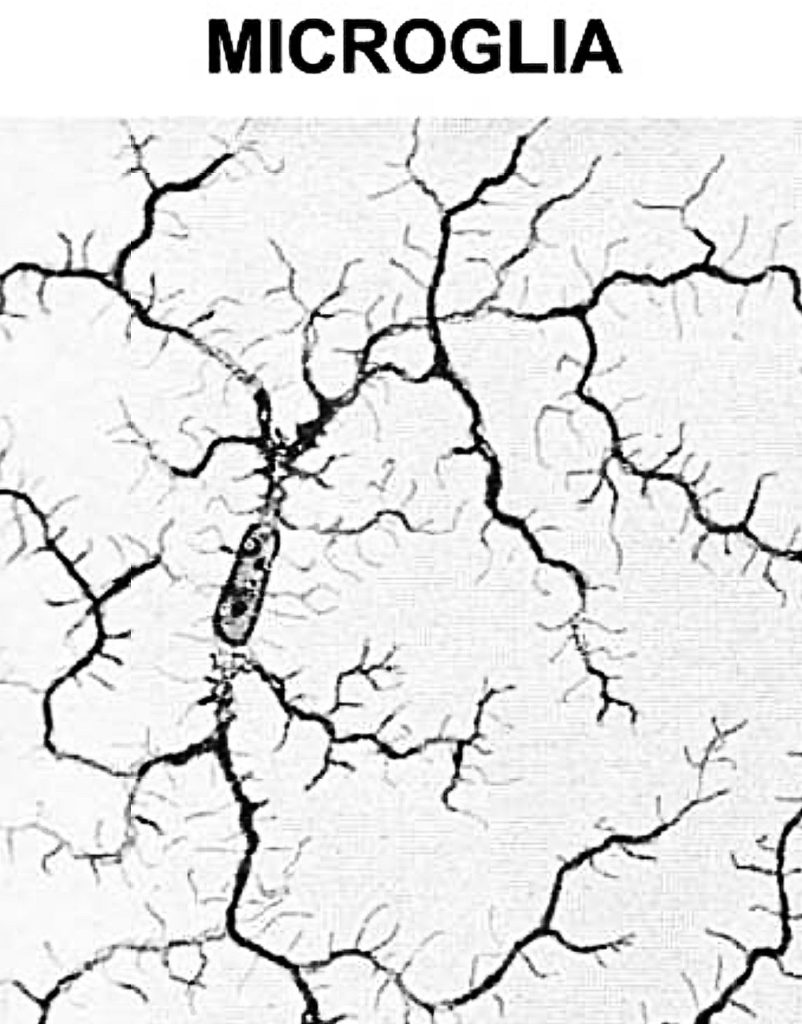
LEARN MORE: Francesca Peri: Micromanaging the lives of microglia
LEARN MORE: Microglia in Health and Disease: A Double-Edged Sword
LEARN MORE: Microglia and Beyond: Innate Immune Cells As Regulators of Brain Development and Behavioral Function
LEARN MORE: Microglia: The Brain’s First Responders
LEARN MORE: Roles of Microglial Phagocytosis and Inflammatory Mediators in the Pathophysiology of Sleep Disorders
LEARN MORE: The Spider Effect: Morphological and Orienting Classification of Microglia in Response to Stimuli in Vivo
“BUT WAIT THERE IS MORE!”
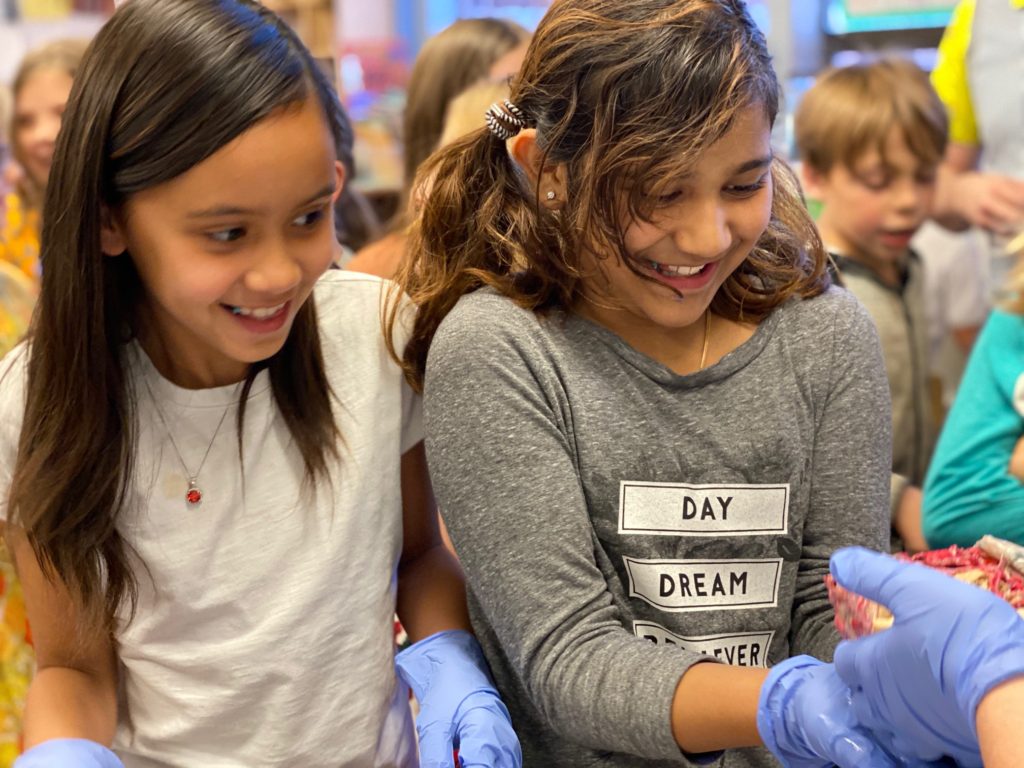
OLI(GODENDROCYTES)!
“The oligodendrocytes are equally vital as any other cells in the Noggin. Oli is one type of ‘myelinating’ glial cell, found in the central nervous system (the brain and spinal cord), and wraps its own fatty membrane (called myelin) around the axon ‘wires’ of neurons.”
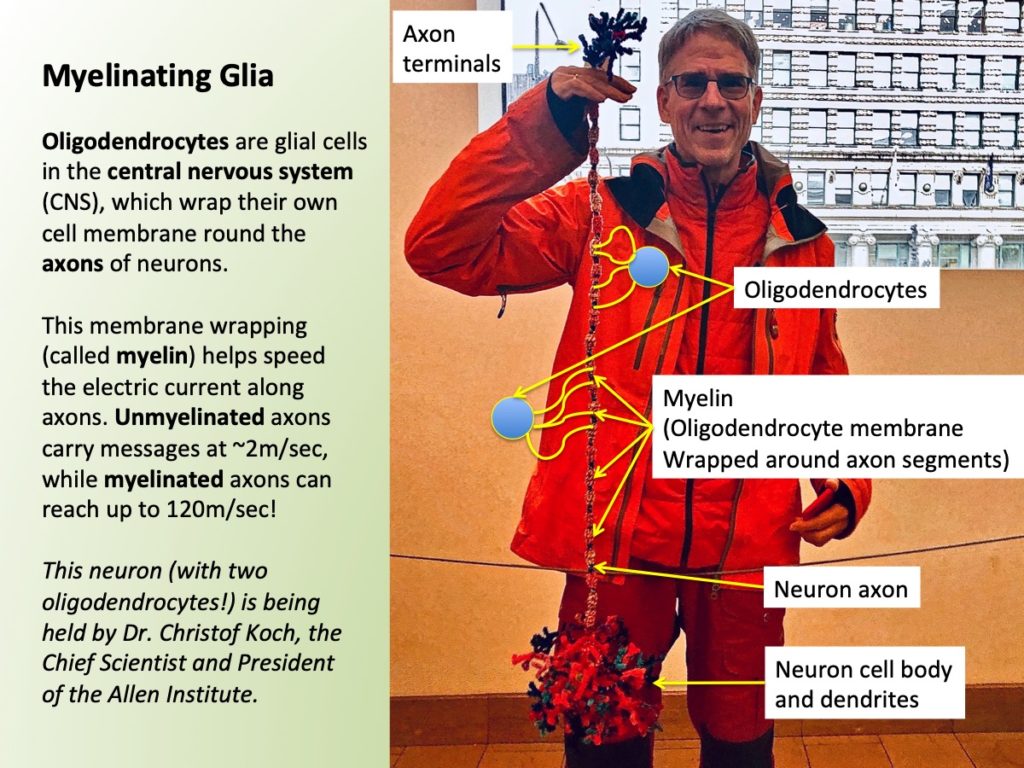
LEARN MORE: Christof Koch, Ph.D.
LEARN MORE ABOUT THE ROLE OF MYELIN: A Tale (Tail?) of Two Neurons
“Once considered static glue, oligodendrocytes are now seen as plastic and adaptive, capable of reacting to a changing CNS.”
– John-Paul Michalski and Rashmi Kothary
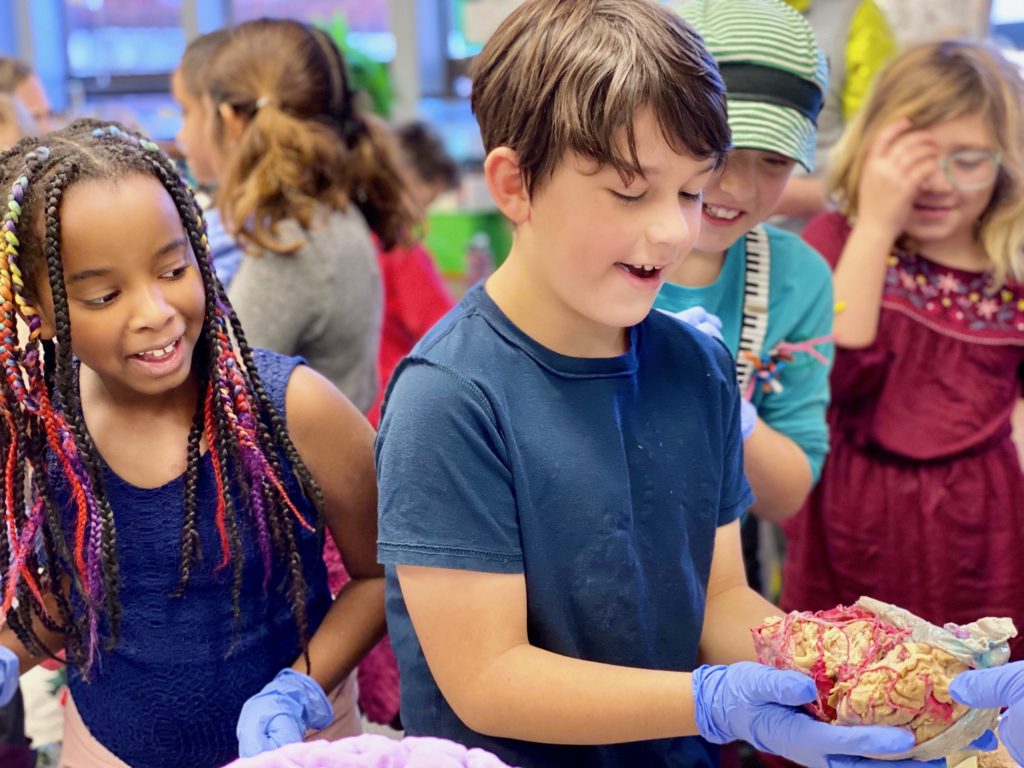
From Paul: “Oli makes it possible for us to function as humans, by greasing the pathways of our brain for high speed communication between neurons.”
LEARN MORE: Oligodendrocytes: biology and pathology
LEARN MORE: Oligodendrocytes in a Nutshell
“BUT WAIT THERE IS MORE!!!“
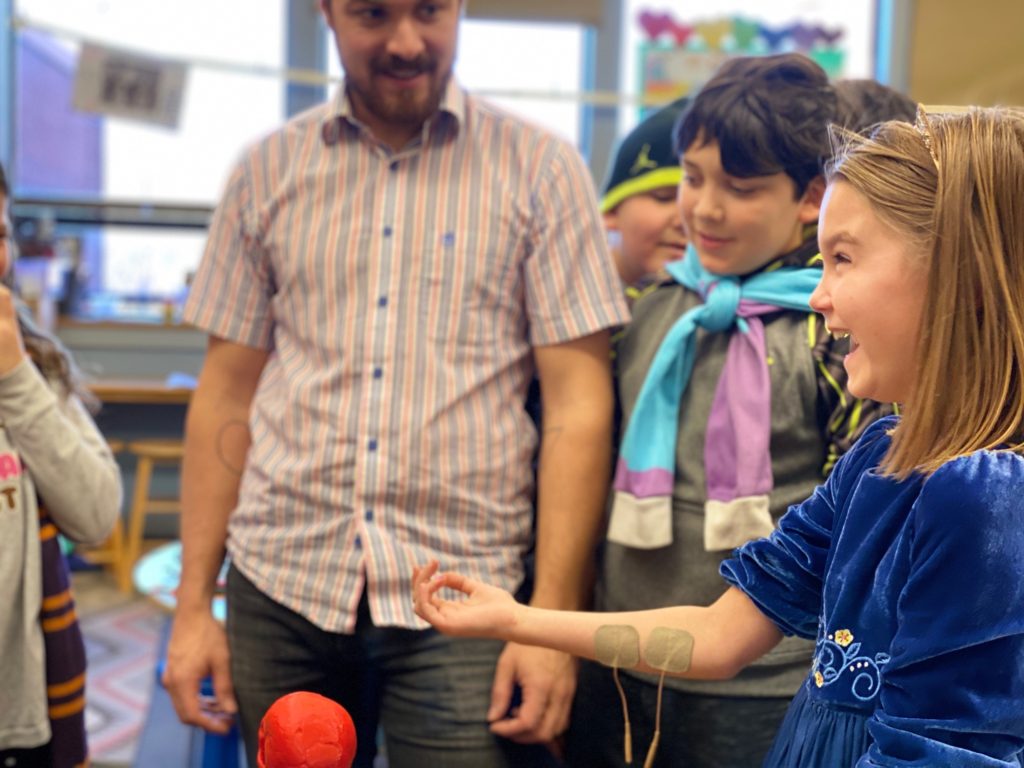
ASTRO(CYTES)!
“Lastly, we have the star of the show: the astrocyte. Astro is involved in many functions of our brains. It ‘listens’ to neurotransmitter release (through its own protein receptors) and couples the level of synaptic activity to the dilation of small blood vessels called capillaries. In other words, if your neurons are firing more, there is more blood flowing to support them – thanks to Astro!”

LEARN MORE: Astrocyte Regulation of Blood Flow in the Brain
LEARN MORE: Role of astrocytes in matching blood flow to neuronal activity
LEARN MORE: Astrocyte regulation of blood flow in the brain
“Astro also releases chemicals that ‘tighten up’ the capillaries – that seal most gaps between the cells that make up these tiny tubes that carry blood. This forms what we call the blood brain barrier in our CNS, which helps protect these structures from toxins and disease. So no leaky plumbing – thanks to Astro!”
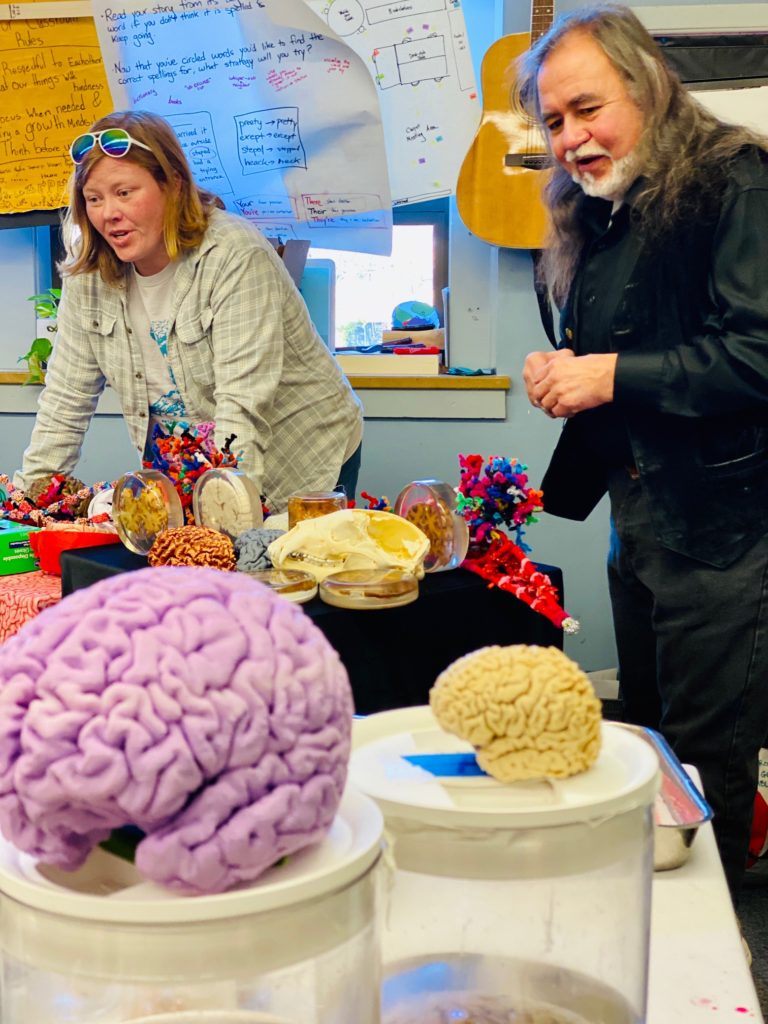
LEARN MORE: Astrocyte-endothelial interactions and blood-brain barrier permeability
LEARN MORE: Glial influence on the Blood Brain Barrier
LEARN MORE: The blood-brain barrier: an overview: structure, regulation, and clinical implications
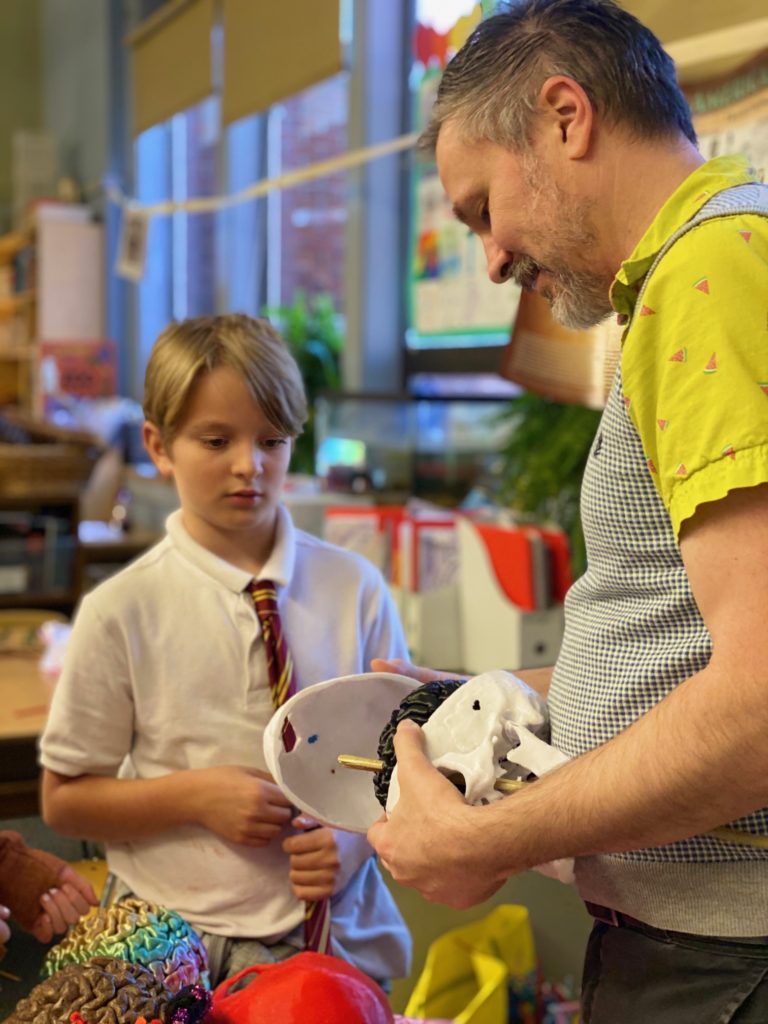
“Astrocytes also communicate with neurons through their response to neurotransmitters – and through release of their own gliotransmitters! This cell is unlike any other cell in the universe; so complicated, poetic, beautiful, astronomical and mysterious.”
LEARN MORE: Astrocytes process synaptic information
LEARN MORE: Astrocyte function from information processing to cognition and cognitive impairment
LEARN MORE: Neuron-glia networks: integral gear of brain function
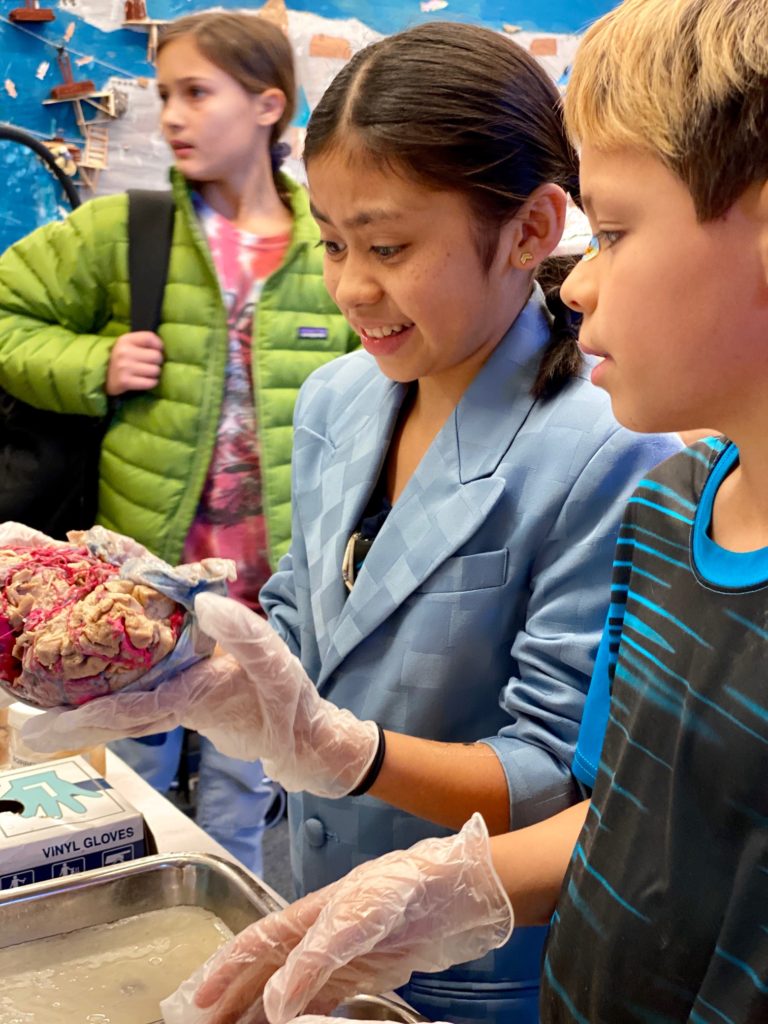
We spent a terrific afternoon fielding more questions.
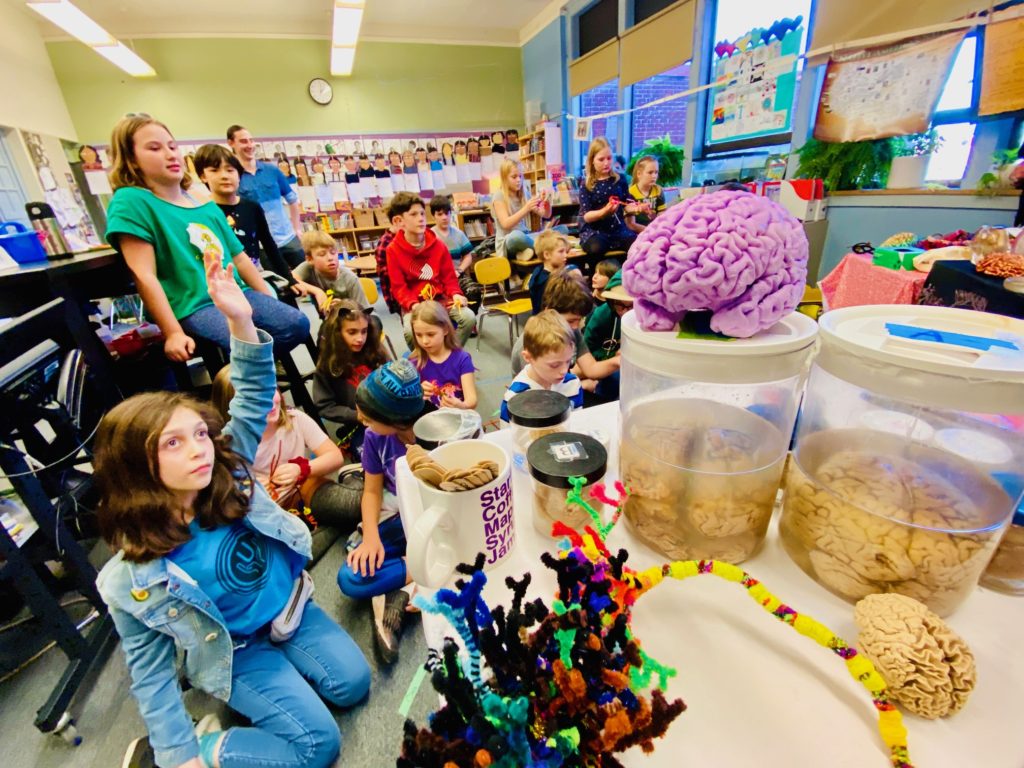
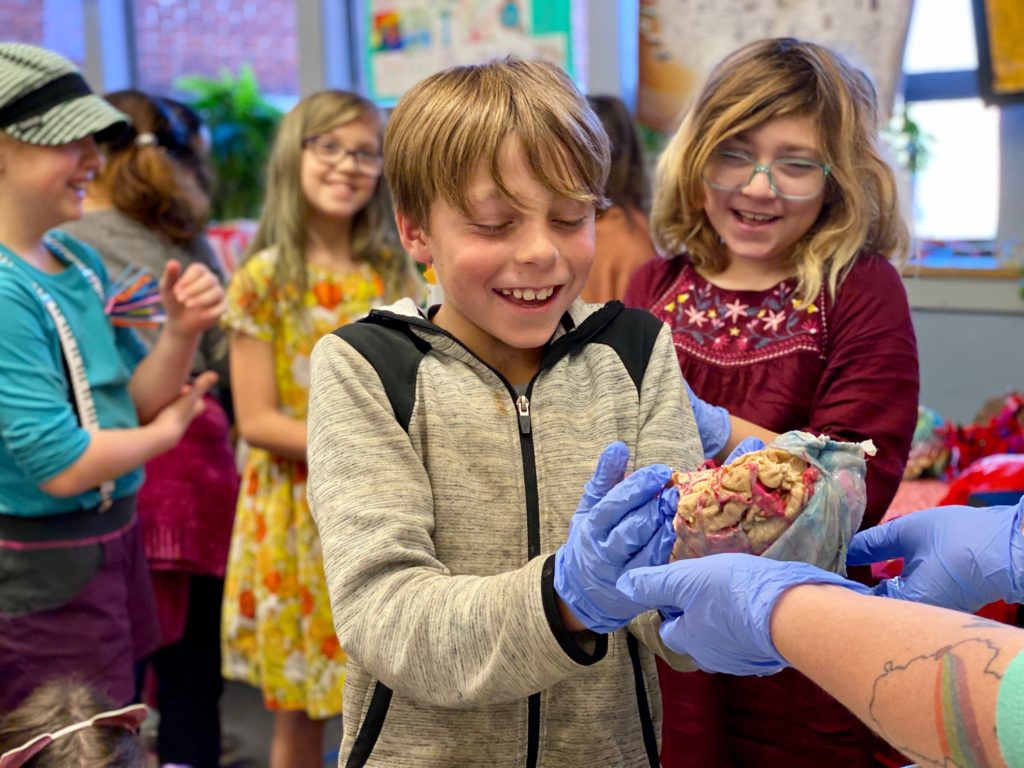
“What happens to your #brain when you hit your head? How soft is my brain? How many brain cells do I have? How many does my mom have? Are there other cells in the brain besides #neurons? (Yes! #glia) Where is the #amygdala?”
We also crafted brain cells (of ALL kinds!)…
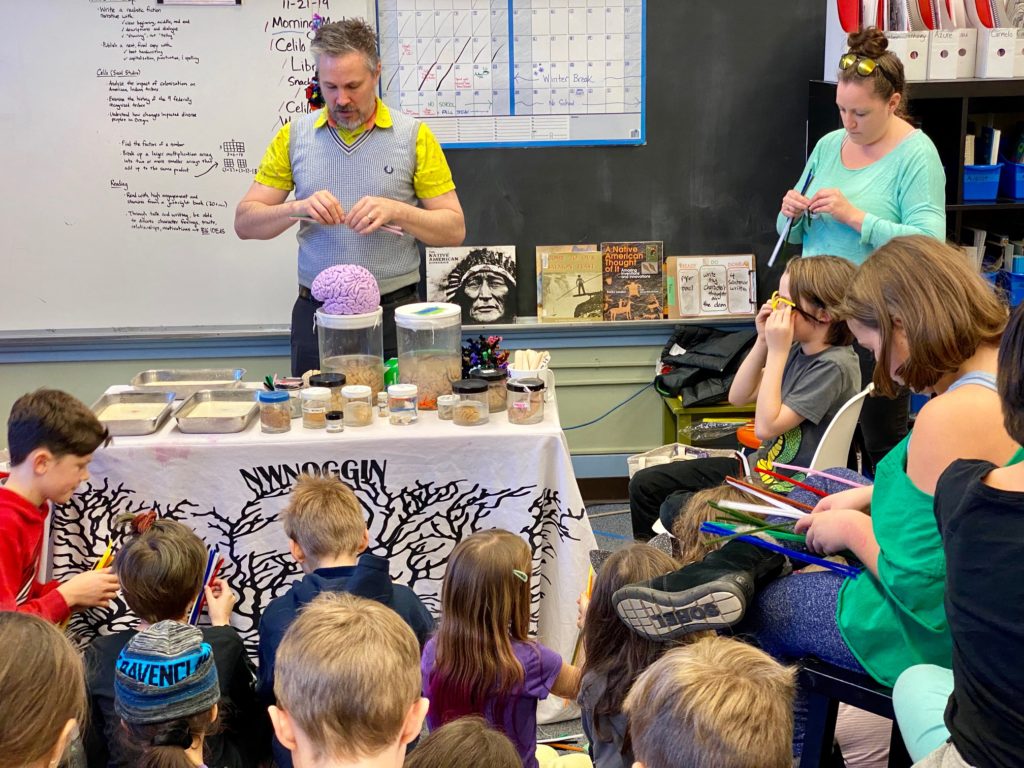
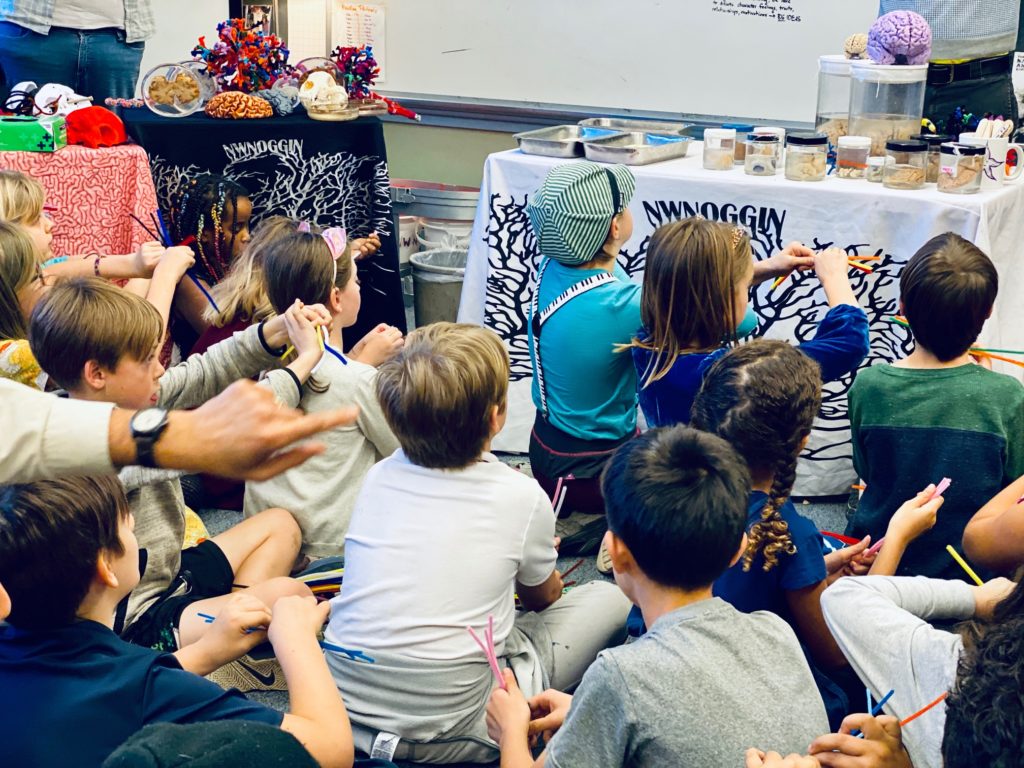
LEARN MORE: Make a Pipe Cleaner Neuron (& More!)
And we explored the electrical nature of information flow along those wiry axons (both the glially myelinated, and the unmyelinated) in our own brains and bodies!
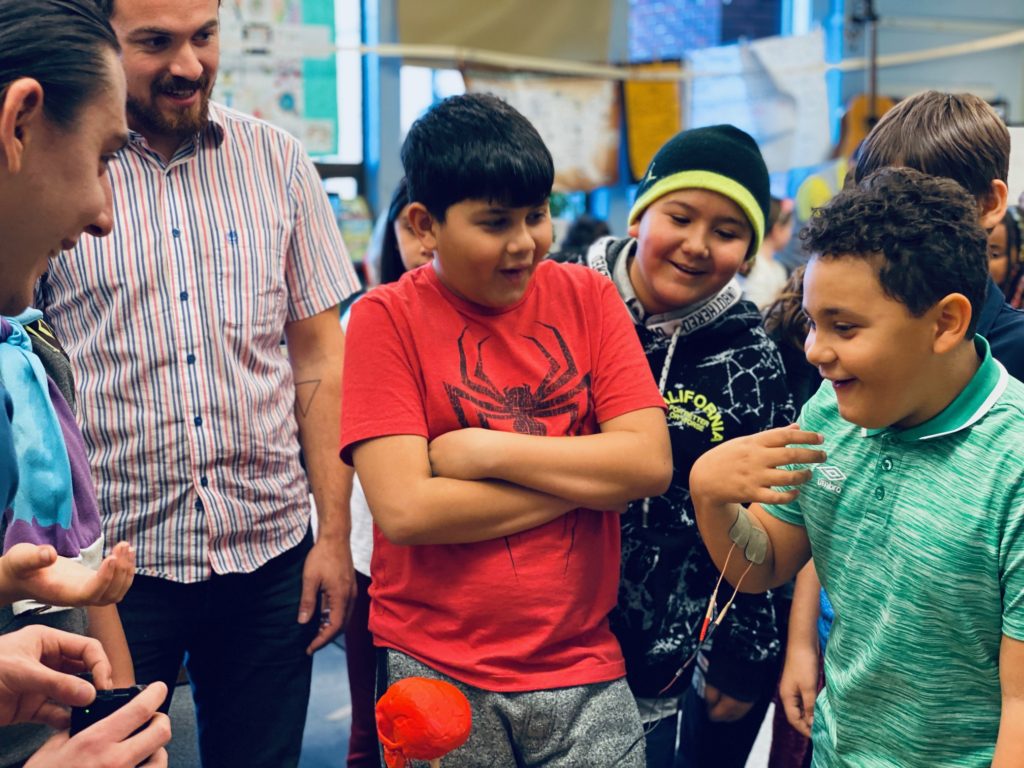
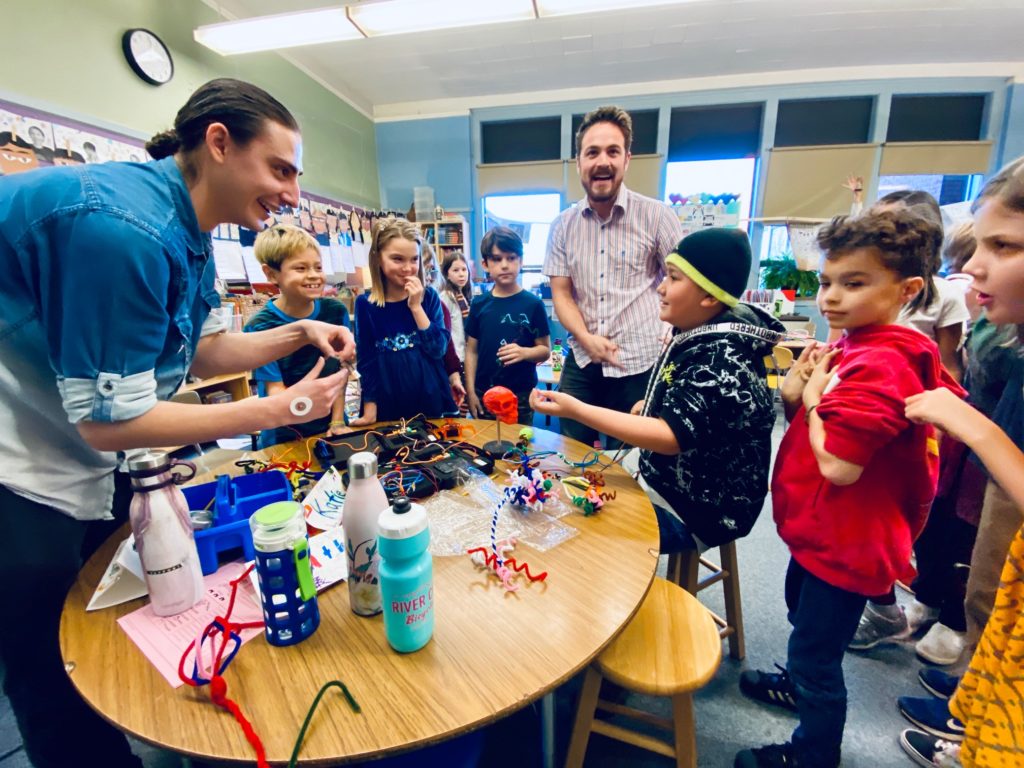
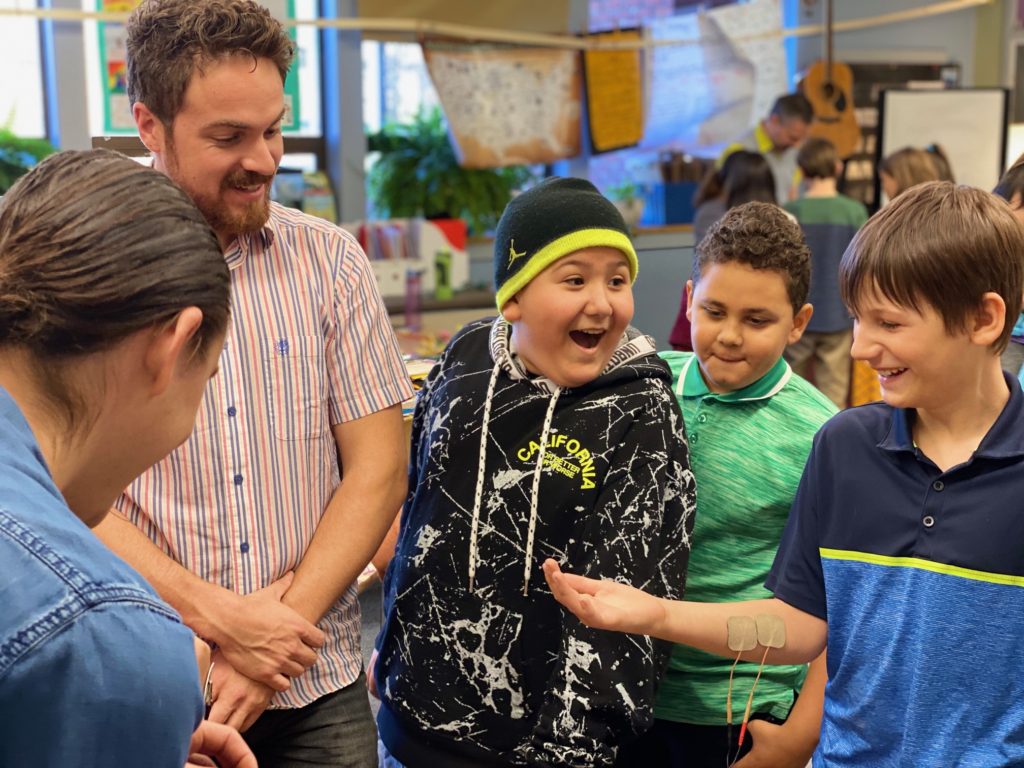
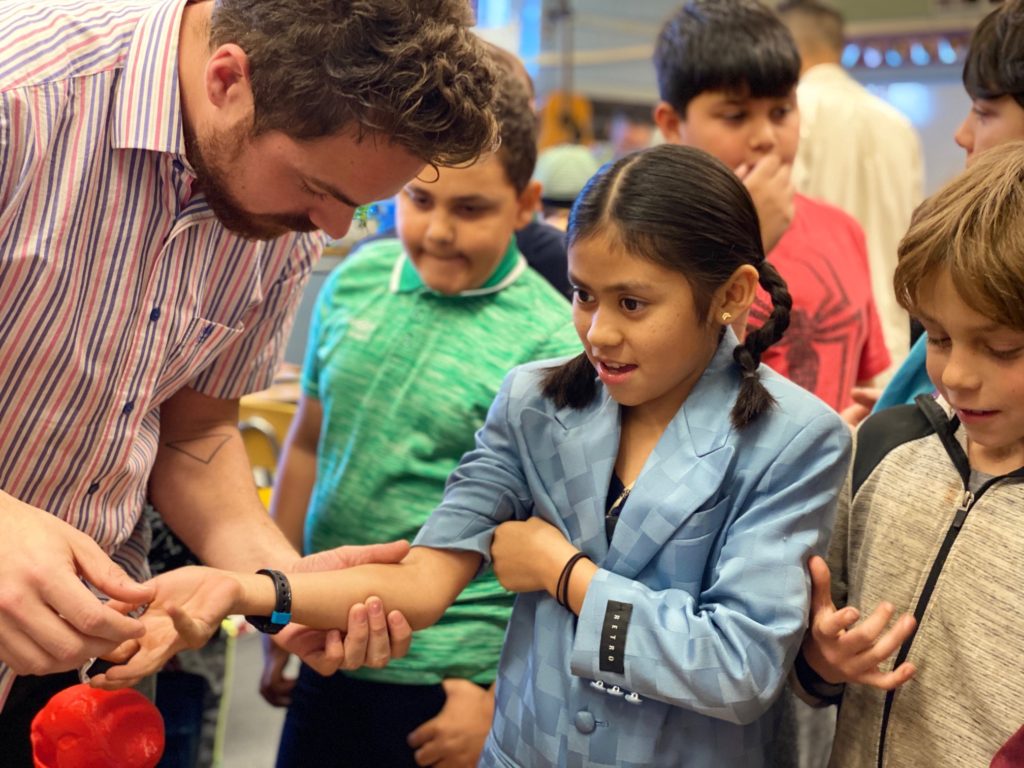
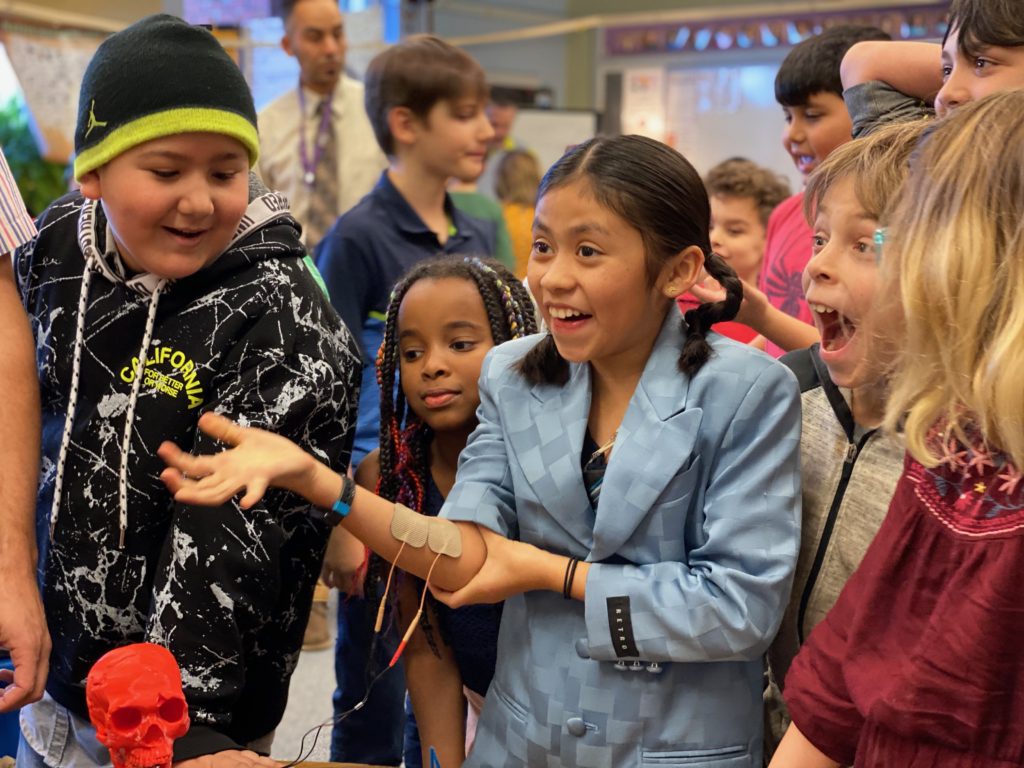
LEARN MORE: Brain Hacking is Electric!
From Rebecca Cohen, School Counselor at Sunnyside: “I haven’t slept in THREE DAYS – I’ve just been so excited about you guys coming to talk about #neuroscience & bring these #brains!!”
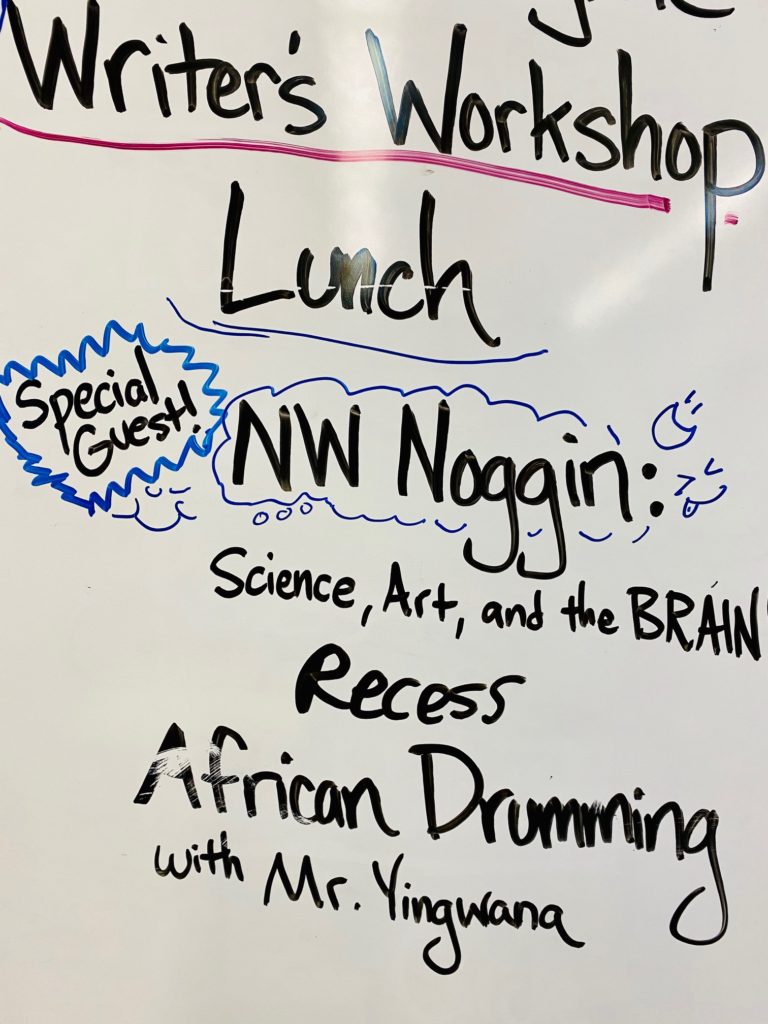
We asked everyone at end of each class if they had any last minute questions. One student had this to say: “Where are you going next? Where can I find you guys again to talk about #brains & make more #neurons?”
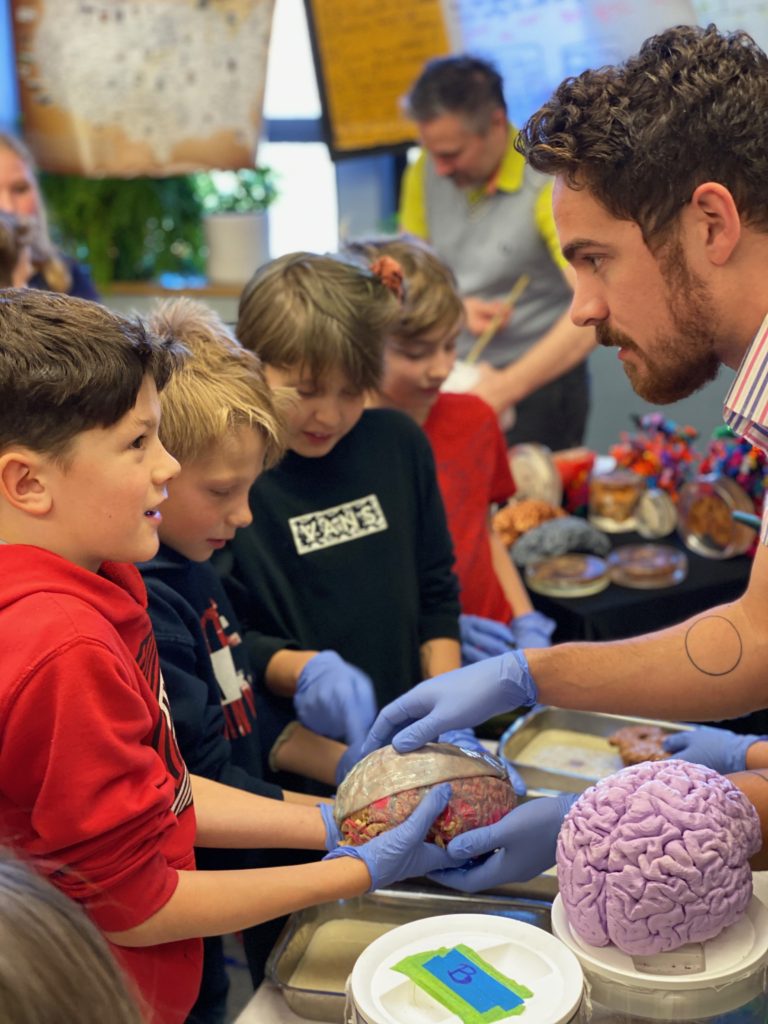
And another student at Sunnyside raised her hand to declare: “I want to know more about the glia!”
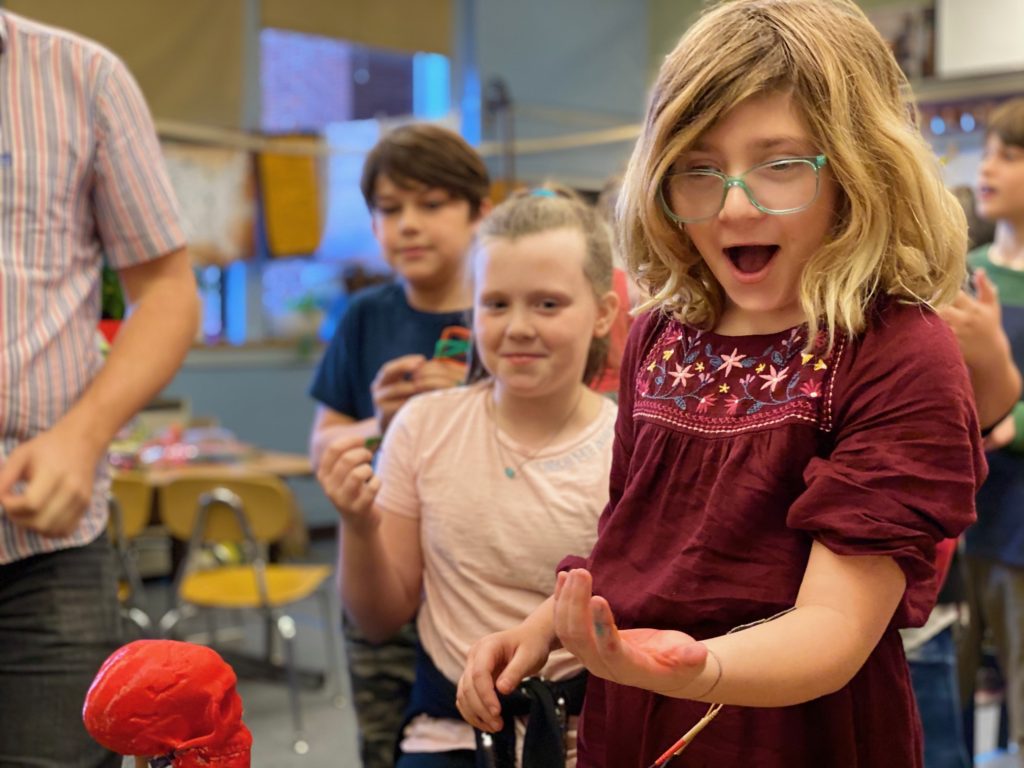
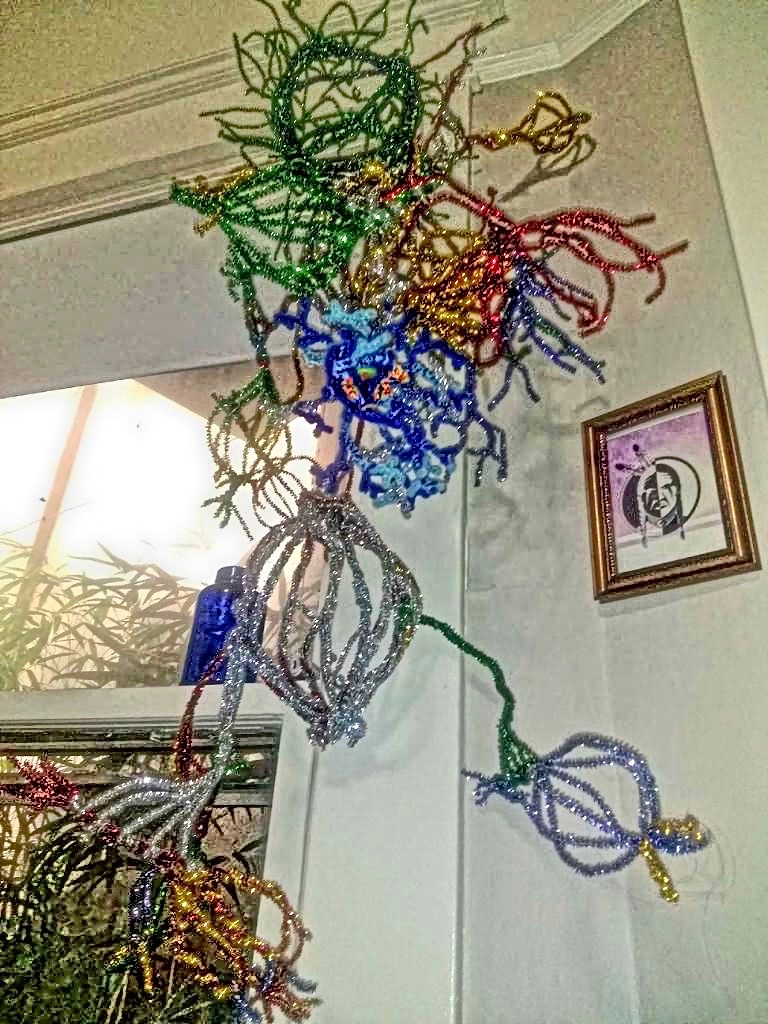
WHAT WE LOVE MOST: Going places, listening, talking #neuroscience #research, learning, motivating and inspiring others and ourselves – and, of course, making #art!
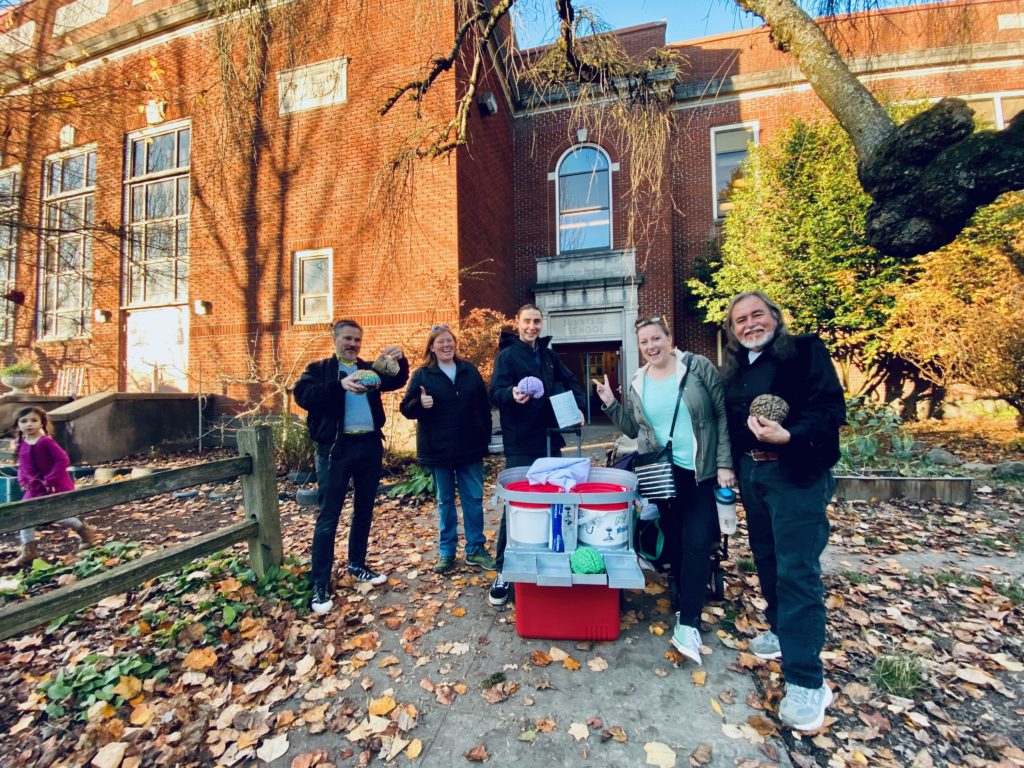
Thank you Asa, Jeremy, Rebecca and the students at Sunnyside!
